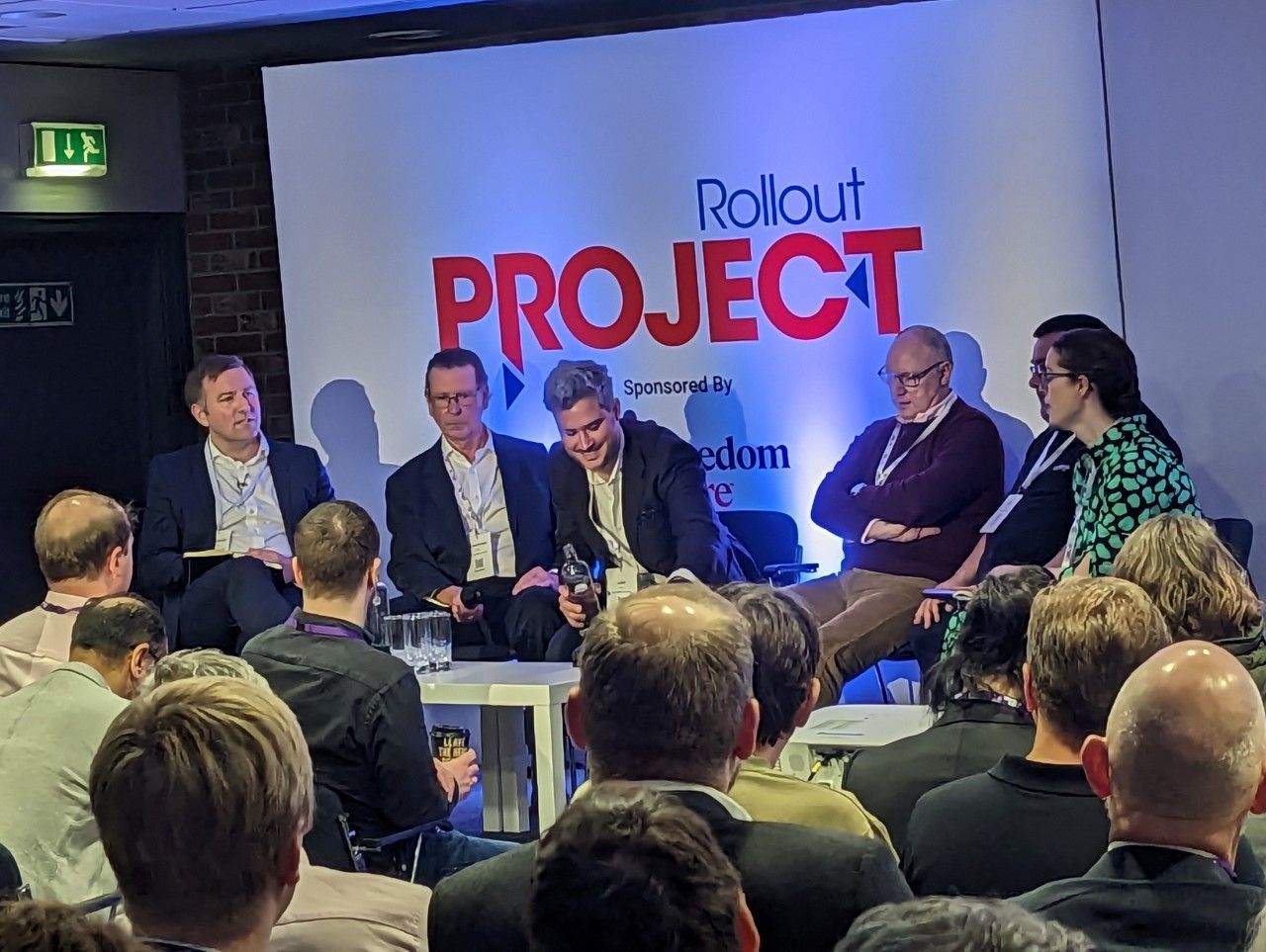How to Connect Rural Britain
How to Connect Rural Britain and the Hardest-to-Reach Customers
The lack of rural connectivity in the UK has become a pressing issue, creating a digital divide that impacts individuals, businesses and farmers.
This lack of access has a further impact on social mobility, particularly when around 37% of workers in the UK spend at least one day a week working remotely.
In 2021 the Public Accounts Committee published a report on improving broadband which states ‘1.6 million UK premises, mainly in rural areas, cannot yet access superfast [internet] speeds’. Since then, we are happy to report that there has been some progress. As of early 2025, approximately 98% of all UK households have access to high-speed broadband (defined as speeds of 30 Mbps or higher). In rural areas, that figure is 89% — a decent improvement in the last few years. However, the gap is larger when we consider gigabit speeds: only 52% of rural households can connect to gigabit-capable broadband, compared to 87% in urban areas
There is still a significant gap to plug, but things are moving in the right direction. This allows the focus to shift, in part, to the next phase: establishing a modern digital infrastructure which can support a digital-first strategy in public services, as well as encouraging local innovation, such as smart city programmes. The hope is that this infrastructure will drive inward investment which then create a virtuous circle, where as more infrastructure is built, more innovative businesses are attracted to the region, which in turn drives demand for more advanced infrastructure. In this article we look at the improvements in rural connectivity and the programmes and innovations which are most likely to have a social impact.
Connected North Conference 2025

Meredith Sharples chairing a panel on Rural and Hardest-to-reach at the Connected North conference in Manchester 2023
At the Connected North conference in Manchester, 23–24 April 2025, two of our digital infrastructure experts, Clive Quantrill (Senior Partner - Telecoms Strategy & Transformation) and Duncan Clubb (Senior Partner - Data Centres, Edge & Cloud), will be moderating panels on the impact of edge compute and solving the problems of alt-net post-integration operability. For more details see the Connected North agenda: https://www.terrapinn.com/conference/connected-north/agenda.stm
Closing the Digital Divide in Rural Areas
Local authority areas in England classified as ‘predominantly rural’ contribute around £253bn of Gross Value Added (GVA), which equals 15% of England’s total GVA (House of Lords Library, 2020).
Consequently, the push for greater connectivity and superfast internet is vital if we are to strive for growth—both economically and socially.
Covid-19 caused an abrupt shift towards digital service delivery and remote work, emphasising a need for access to digital technology and the skills necessary to apply for remote job opportunities. To prevent the growth of digital poverty, it is imperative to ensure that connectivity options, relative costs, internet speed and digital skills are levelled up — to give one example, internet speeds in some rural areas are so bad that farmers have to travel significant distances to a public library to apply for agricultural subsidies.
One of these major challenges is a lack of funding. With providers reluctant to invest in the digital future for the hardest-to-reach, who will bear the cost of ensuring equality across the country?
In 2020 the UK government announced Project Gigabit, a £5bn investment aimed at ensuring that 85% of premises have access to gigabit-capable broadband by 2025. Now that this hurdle is largely passed, the next phase is to connect the most remote to gigabit-capable broadband and continue building the digital infrastructure that will support the needs of modern services and future technologies such as 5G, IoT and edge computing. This is essential to protect the rural population from the social effects of a stark digital divide between urban and rural areas.
Unfortunately, significant barriers remain and exclude the hard-to-reach from large infrastructure projects:
- The cost of laying fibre-optic cables can be up to 20 times higher than in urban areas. Home and farms are spread out, and legal permission is required to lay cable across large stretches of private or public land
- Despite the UK government's efforts to simplify the planning process, with initiatives such as changes to permitted development rights and a new code of practice for telecoms infrastructure, many of these changes are still in their infancy
- Infrastructure is not only more expensive to build, but also to maintain in remote environments
- Limited competition between internet service providers (ISPs) in rural parts of the UK leads to higher prices and fewer options for residents
Recent Successes
- National ISPs: Several significant initiatives are already underway to strengthen the North's digital backbone. BT, a major infrastructure provider, reports substantial economic impact in the region, including £4.1 million in GVA contribution, direct employment of 25,700 people, and support for a total of 49,200 jobs across the North. Their digital fabric strategy aims to connect industries and provide essential connectivity for innovative technologies.
- Full Fibre Rollouts: Providers like Freedom Fibre and Quickline are actively expanding full-fibre networks across Northern England. Freedom Fibre, for example, is deploying fibre in North Shropshire and parts of Cheshire, while Quickline is connecting rural villages in Yorkshire and Lincolnshire with FTTP and 5G-powered fixed wireless access (FWA) technologies.
- Altnets: Over 100 altnets now operate nationally, with 32+ Project Gigabit contracts awarded. Northern-focused providers like B4RN have connected 7,000 rural homes. By 2025, altnets were expected to pass nearly 14.25 million premises with full fibre infrastructure, covering about 50% of the UK's population. Additionally, altnets with fixed wireless access networks can reach up to two million more premises, mainly in rural areas.
- Satellite: Connectivity has moved from trial to critical infrastructure in Northern England. In 2024, NHS North of England deployed Starlink terminals at 15 rural GP surgeries, slashing diagnostic delays in communities like Alston Moor (Cumbria). Meanwhile, Virgin Media O2’s Craster mast — backhauled via Starlink — now provides 250,000 annual tourists with reliable connectivity, boosting local revenue by 18%. With BT/EE and Amazon’s Project Kuiper launching rival services in 2025, the North is poised to eliminate ‘not spots’ by 2027.
- Education: The region's five universities and higher education colleges are also playing a crucial role, producing 68,000 students studying STEM subjects and offering one of the highest proportions of computer science students in England. This educational pipeline is creating the skilled workforce needed to develop and maintain edge computing systems.
- Community-Led Projects: Community-led initiatives such as B4RN (Broadband for the Rural North) have been instrumental in connecting thousands of rural homes in the North West. These projects often involve community participation and innovative funding models.
- Fibre to the Mast (FTTM): FTTM remains a viable alternative to connect homes by fitting a discreet antenna that links to a nearby mast or repeater. FTTM technology has been around for a while now and in recent years it's been adopted by ISPs and government as an an alternative technology to connect remote locations. Installing masts is costly, but some providers are exploring ways to share the cost and have one mast serve several operators and functions.

Key Takeaway
Achieving better rural connectivity in rural areas requires a collaborative approach involving government funding and voucher schemes, regular oversight from local authorities, incentives for ISPs, and community-led projects.
ISPs may need to use a mix of technologies to reach remote locations and communities. They might also need to find ways to share the cost, via shared masts for example. It is also important that large infrastructure projects use technology solutions that will last and provide reliable and upgradable network access for the long-term; with maintenance costs and the impact of weather (in the case of satellite and masts) being a factor.
By all working together, we can ensure that residents and businesses in rural locations have access to fast and reliable internet that meets their needs and grants them the opportunities which they deserve.
Get in Touch
We have a range of strategy, digital infrastructure, project management, and integration consulting services geared towards regional ISPs, AltNets and the PSTN switch-off in 2027. If you have any questions or think you might benefit from one of our services, please do not hesitate to get in touch using the form below.
Sources
https://bbcmag.com/uk-altnet-fiber-to-reach-1-million-premises-by-2025/
https://totaltele.com/vmo2-bring-connectivity-to-rural-notspot-with-starlink/
https://superfastnorthamptonshire.net/project-delivery/project-gigabit/
https://investnortheastengland.co.uk/sectors/digital-and-tech/
Contact - Africa
Subscribe to our Newsletter
Blog Subscribe
SHARE CONTENT












